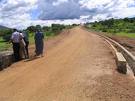John Petro
Mr. Obama, Why “Roads and Bridges?”

There has been some negative reaction to Barack Obama’s weekly address from last Saturday in which the president-elect laid out the key parts of his economic recovery plan, specifically the part where he talks about infrastructure investment.
"Second, we will create millions of jobs by making the single largest new investment in our national infrastructure since the creation of the federal highway system in the 1950s. We’ll invest your precious tax dollars in new and smarter ways, and we’ll set a simple rule – use it or lose it. If a state doesn’t act quickly to invest in roads and bridges in their communities, they’ll lose the money."
“Federal highway system” and “roads and bridges” are the two phrases that raised alarm bells for those who, like me, hope that the new administration will take a new approach to transportation spending. I have no problem with spending for road and bridge repair and maintenance, but would be strongly opposed to building new roads or expanding highway capacity – especially at a time when Americans are driving fewer miles and transit ridership continues to increase despite falling gasoline prices. I say I’m opposed to new road building generally; I’m sure that there are some new road projects out there that are worthwhile. I’m also sure that for every new road project that has merit, there are two projects that would only increase suburban sprawl for little economic return. State and local governments are already having tarmac dreams.
There needs to be some sort of criteria in place for infrastructure projects, so that we’re not stuck with the harmful effects of even more sprawl and auto-dependence long after the financial crisis has passed. As I said above, the first round of spending should go towards repair and maintenance of existing facilities. There are more than enough of these projects to provide an immediate economic stimulus. One estimate is that it would take $9.4 billion a year for 20 years to bring our bridges up to working order. This can be done without paving over any greenfields or adding any more carbon-spewing automobiles to the road. While the first round of spending is underway, public transit projects that aren't quite "shovel-ready" can go through the planning stages and be ready for a larger round of spending, say in 8-12 months.
Right now there is still altogether too much uncertainty about what types of projects the president-elect has in mind for the initial round of infrastructure spending stimulus. State and local governments need more direction from president-elect Obama about what types of projects his administration plans on funding after January 20th so that states and cities have enough time to prioritize, plan, and prepare for the first round of spending.
John Petro: Author Bio | Other Posts
Posted at 11:57 AM, Dec 11, 2008 in
Infrastructure | Transportation | Urban Affairs
Permalink | Email to Friend










